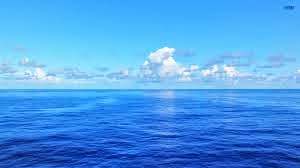Introduction to Weather and Climate
1) What warms the planet?
The rays from sun is what warms the planet.
2) Referring to this diagram explain why the equatorial regions receive more radiation and therefore are warmer than polar regions.
They receive more direct sunlight then the polar regions, which keeps it warmer.
3) Define Albedo. Which would absorb more radiation a snow coveredmountain or a black roof?
Albedo is the fraction of solar energy reflected from the Earth back into space. A black roof would absorb more heat because of its dark colour.
4) Explain lapse rate.
The lapse rate is the rate at which atmospheric temperature decreases with increase in altitude.
5) Explain Aspect. In the Northern Hemisphere will plants grow better on the north or the south side facing side of a mountain?
Aspect is the compass direction that a slope faces. The south facing side is more prone to sunlight, therefore plants would grow faster on this side.
6) Why do we have seasons?
We have seasons because the Earth is tilted on its side. When the Earth's axis points towards the sun, it is summer for that hemisphere. When the Earth's axis points away, winter can be expected.
7) Which heats up faster: Land or Water?
Land because the heat gets absorbed in the surface, while water takes a long time to heat up due to its different physical properties. Water has to heat all the way through, unlike land.
8) Describe the impact that being far away from water has on the climate of the prairies.
The climate is a lot dryer, causing some types of plants to not be able to grow.
9) Explain the impact of the Gulf Stream on Norway.
The Gulf Stream has strong winds, and keeps away ice and snow, even though Norway is close the the Artic zone.
10) What current runs past BC?
The Alaska current runs past BC.
11) Describe the impact of adding extra carbon dioxide to the atmosphere onthe temperatures of Earth.
Adding more carbon dioxide would cause the Earth to heat up more. This also would advance global warming.
12) Describe convection. THIS IS IMPORTANT TO UNDERSTAND AS WE MOVE THROUGH THE COURSE
Convection is the collective conserted movement of molecules, either through advection or diffusion (or both together).
13) What is wind?
Wind is the natural movement of air, especially in the form of a current of air blowing in one direction.
14) Explain urban heat islands, and explain why they occur.
Urban heat islands are areas that are significantly hotter than its surrounding areas. This occurs due to human activity.
.svg.png)




.svg.png)
